Buy this portrait Stieler and Beethoven Painting by Paul Meijering on canvas, ArtFrame, poster and wallpaper, printed on demand in high quality.
About "Stieler and Beethoven Painting"
by Paul Meijering
About the artwork
Realistic acrylic painting of the German painter Joseph Karl Stieler showing his portrait of Ludwig van Beethoven, painted by the Dutch fine artist Paul Meijering - the original painting is 120 x 90 cm and part of a permanent collection.
Joseph Karl Stieler (Mainz, 1 November 1781 - Munich, 9 April 1858) a German painter, was trained in painting at an early age by his father August Friedrich Stieler. After his father's early death, he went to work as a miniature painter to contribute to the family's livelihood. Through that work, he got to know Freiherr Karl Theodor von Dalberg, who would support him in his further career. In 1802, he went to Vienna to study art, travelled through Russia shortly afterwards and in 1807 went to Paris for a year and a half, where he studied with François Gérard, a pupil of Jacques-Louis David. In late 1808, he established himself as an independent portrait painter in Frankfurt am Main. In 1810, he travelled to Italy; in 1816, he portrayed Emperor Francis I in Vienna, among other places. In 1820, Stieler became court painter to the king of Bavaria, Maximilian I Joseph, and would remain so, from 1825 under Louis I of Bavaria, until 1855.
Stieler became best known for his portraits, where he always focused full attention on the model, without decorative additions. He captured famous contemporaries on the silver screen, including Goethe, Beethoven, Wagner, Schelling, Amalia of Oldenburg, Ludwig Tieck, and Von Humboldt. He also became famous for his 34 portraits of 'beautiful' Bavarian women, collected in the so-called Schönheitengalerie of Nymphenburg Palace.
After his retirement as court painter, Stieler lived for a few more years in a summer house in Tegernsee. He died in Munich in 1858 as a result of pneumonia.

About Paul Meijering
For almost 33 years now, Paul Meijering has been active with the paint brushes. As a 17- year old inspired youngster he joined the Academy of Arts in Enschede (Holland) in order to receive a native training in drawing- and painting technique.
At that time (1980) the tendency..
Read more…
 Netherlands
Netherlands Ordered in May 2020
Ordered in May 2020
 Germany
Germany Ordered in May 2019
Ordered in May 2019
 Germany
Germany Ordered in March 2021
Ordered in March 2021
 Germany
Germany Ordered in October 2021
Ordered in October 2021
 Germany
Germany Ordered in November 2019
Ordered in November 2019
 Germany
Germany Ordered in October 2023
Ordered in October 2023
 Germany
Germany Ordered in April 2022
Ordered in April 2022
 Netherlands
Netherlands Ordered in February 2024
Ordered in February 2024
 Netherlands
Netherlands Ordered in December 2018
Ordered in December 2018

 Netherlands
Netherlands Ordered in November 2022
Ordered in November 2022
 Germany
Germany Ordered in September 2020
Ordered in September 2020
 Netherlands
Netherlands Ordered in February 2019
Ordered in February 2019
About the material
ArtFrame™
Interchangeable Art Prints
- High-quality print
- Easily interchangeable
- Acoustic function
- Large sizes available
Discover the artworks of Paul Meijering
 Alfa Romeo 33 Stradale PaintingPaul Meijering
Alfa Romeo 33 Stradale PaintingPaul Meijering Saab 90 PaintingPaul Meijering
Saab 90 PaintingPaul Meijering Volkswagen Transporter T1 Samba PaintingPaul Meijering
Volkswagen Transporter T1 Samba PaintingPaul Meijering Bugatti Type 35 1924 PaintingPaul Meijering
Bugatti Type 35 1924 PaintingPaul Meijering Peugeot 504 1968 PaintingPaul Meijering
Peugeot 504 1968 PaintingPaul Meijering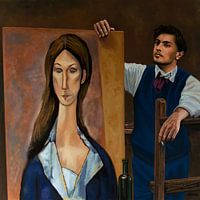 Modigliani PaintingPaul Meijering
Modigliani PaintingPaul Meijering Harley Davidson PaintingPaul Meijering
Harley Davidson PaintingPaul Meijering Harley Davidson Duo Glide PaintingPaul Meijering
Harley Davidson Duo Glide PaintingPaul Meijering Alfa Romeo 8C 2900A Botticella Spider 1936 PaintingPaul Meijering
Alfa Romeo 8C 2900A Botticella Spider 1936 PaintingPaul Meijering Audi R8 2007 PaintingPaul Meijering
Audi R8 2007 PaintingPaul Meijering Bentley Blue Train 1930 PaintingPaul Meijering
Bentley Blue Train 1930 PaintingPaul Meijering Bugatti Veyron 2005 PaintingPaul Meijering
Bugatti Veyron 2005 PaintingPaul Meijering Chevrolet Corvette Stingray 1971 PaintingPaul Meijering
Chevrolet Corvette Stingray 1971 PaintingPaul Meijering Ferrari 250 GTO 1962 PaintingPaul Meijering
Ferrari 250 GTO 1962 PaintingPaul Meijering EMW BMW 1951 PaintingPaul Meijering
EMW BMW 1951 PaintingPaul Meijering Edward Hopper PaintingPaul Meijering
Edward Hopper PaintingPaul Meijering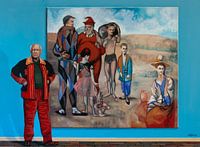 Pablo Picasso PaintingPaul Meijering
Pablo Picasso PaintingPaul Meijering Friedrich Nietzsche PaintingPaul Meijering
Friedrich Nietzsche PaintingPaul Meijering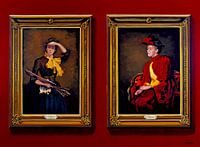 Therese Schwartze Portrait PaintingPaul Meijering
Therese Schwartze Portrait PaintingPaul Meijering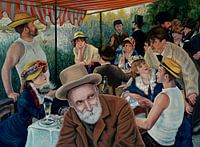 Auguste Renoir PaintingPaul Meijering
Auguste Renoir PaintingPaul Meijering
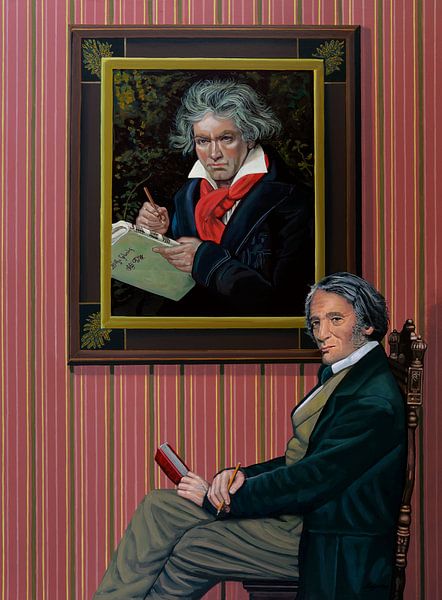












 Bavaria
Bavaria Germany
Germany Music
Music Nostalgic Memories
Nostalgic Memories Portrait
Portrait









